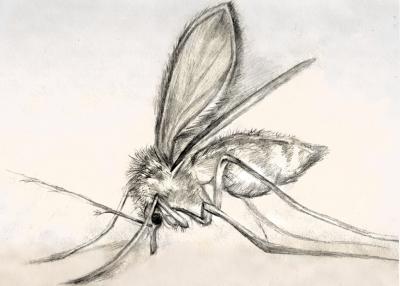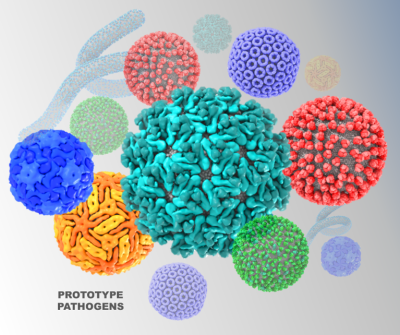World Neglected Tropical Diseases (NTD) Day offers an opportunity to reflect on recent strides in tropical disease research and the work that remains. NIAID conducts and supports work on a wide variety of diseases—some of which rarely make headlines but cause immense suffering. An example of this is leishmaniasis, a parasitic disease that sickens hundreds of thousands of people each year, mostly in equatorial regions of the globe. In recent years, NIAID has made significant efforts to study the parasite that causes the disease and find new ways to battle it.
The single-celled Leishmania parasite, which is spread by the bites of infected sand flies, can cause a wide array of symptoms. Cutaneous leishmaniasis, the most common form of the disease, is a skin infection. It manifests as skin ulcers, which may lead to lifelong scarring. The World Health Organization estimates that between 600,000 and 1 million people get cutaneous leishmaniasis each year. A rarer form, mucosal leishmaniasis, attacks the membranes in the nose and mouth and results in painful ulcers, nosebleeds, and related symptoms.
The most severe form is visceral leishmaniasis (also known as kala-azar), in which the Leishmania parasites attack the patient’s internal organs, such as the spleen, liver and bone marrow. This leads to organ dysfunction that is usually fatal if left untreated. Sick patients with visceral leishmaniasis often have fevers, anemia, weight loss and severe fatigue. While a wide array of therapeutics can be used to treat leishmaniasis, not all therapeutics work equally well for different forms of Leishmania parasites.
This diversity of treatment options poses a serious problem for healthcare providers because there are at least 20 species of Leishmania. Studying each individual strain and how they differ from one another will be key in developing therapeutics and preventive measures. NIAID supports a Tropical Medicine Research Center (TMRC) in Sri Lanka, which has conducted epidemiological and molecular studies on locally occurring types of Leishmania, comparing it with strains from India.
Unfortunately, recent research has suggested that different strains of Leishmania are capable of hybridizing with each other, potentially creating offspring resistant to multiple kinds of drugs. How this occurs is largely a mystery, given that Leishmania are single-celled protozoa, and when observed in the lab setting, largely reproduce by cloning themselves. A recent paper from researchers at NIAID explores how their hybridization works. By analyzing the whole genomes of Leishmania parasites, the researchers identified several genes which could allow the parasites to perform meiosis-like gene recombination. In other words, they have the necessary genes to perform a genetic recombination and exchange process similar to sexual reproduction in animals and plants. Understanding how these hybrids arise could be key to understanding how the different strains evolve and change in the future.
To better prepare for these changes, other NIAID-supported researchers are investigating new therapeutics for leishmaniasis and finding better uses for existing therapeutics. In 2021, a team investigating oral antifungal agents for leishmaniasis found that a miltefosine/posaconazole combination worked well together ex vivo, and could be very effective against the most common Leishmania species in Colombia. This year, a different group of scientists found a new therapeutic agent that seems to harm several different species of Leishmania parasites during the part of their life cycle when they are infecting human cells. This agent could be, in theory, both easy and cheap to produce, making it an appealing prospect as a treatment if proven safe and effective in later studies. A third group with NIAID support has been doing early work to optimize a series of imidazopyridine drugs, which pharmacokinetic surveys hint might be effective against visceral Leishmania species. This process attempts to increase the agent’s potency against Leishmania while also making it more tolerable for mammalian cells.
As with many neglected tropical diseases, researching the parasite’s vector is also key to understanding this disease. The sand flies that carry the Leishmania parasite are tiny—smaller than mosquitoes—and transmit the parasites when they bite people and take a blood meal. Another NIAID TMRC, based in East Africa, conducts research on the ecology and behavior of sand flies, in the hopes of finding ways to control the disease by controlling the flies. In the United States, NIAID supports the Sand Fly Repository at the Walter Reed Army Institute of Research, the largest sand fly repository in the world. Through the repository, researchers can access flies from 15 different colonies for use in their own work.
Leishmaniasis remains challenging to prevent and treat—and like all neglected tropical diseases, its impact on people in affected areas is significant. NIAID’s efforts to study Leishmania and its hosts will continue in the years to come in the hopes of finding new and improved ways to combat this disease




